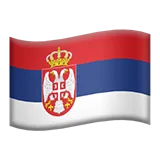In this article we are highlighting one of JetStyle’s best projects that features virtual reality technologies for corporate training. VR has been a buzz-word for a few years now, and our mission is to show that it’s much more than just hype.
Businesses have been looking for ways to decrease training costs and facilitate the internal educational processes. Remote work trend has also pushed companies towards re-inventing corporate training.
Without VR, what are the existing options? Education can be fully theoretical with online testing: it is easy to organize, but your employees will lack practice. A company can build a training range; however, typically they are quite expensive. Also, it is possible to conduct training using the existing equipment, but it will lead to downtime and losses.
Huawei puts a lot of emphasis on corporate training; the company chose VR as a way to optimize education and teams. JetStyle executed the project. Twice, actually; we released the case study about the first VR simulator earlier. Read how VR can help Huawei train future 5G network installment workers.
This first simulator was a success, so Huawei decided to scale the profit to their Logistics and Warehousing department.
This is the story of the profits and challenges of the VR simulator for Huawei’s warehouse workers.
The job was done in a few steps:
After Huawei integrated the simulator into the processes, we received positive feedback:


Zinnur Iskhakov
Huawei manager
Thank you for developing this second simulator in such a short time. This app has everything we need. Now our new employees are more independent and feel more confident about their skills.
We recreated dozens of tools and equipment units in Blender:

Gear

Tools

Equipment

Locations
To create the training venue, we developed a specific copy of the Huawei warehouse. We based all the warehouse layout elements on photos provided by the partner and a 360°-explainer.

All of the scenes look realistic and coherent, because we managed to make the 3D models look close to the originals.
VR’s main advantage is that it allows full immersion into the process. It’s crucial that nothing distracts a user and triggers questions, including the VR-app itself. Our app is simple and intuitive. It never distracts a person from their goal and helps practice new skills.

All of the scenes look realistic and coherent, because we managed to make the 3D models look close to the originals.
Even though VR is pretty close to our reality, it still has its limitations. While testing we found details that could make the user’s experience worse. When we process this information, we ask ourselves what elements are the most essential and what are those we can skip and let go of. What does a user need to see, hear and sense during training?
Example: a person wearing a VR headset knows that the object they’re holding is hot, but they can’t feel the temperature. Or they can take an object in VR and have no idea about its weight. This can cause perception distortion. However, when an engineer finishes the course and starts working in real-life, they will correct this cognitive error and put enough effort into lifting an object.
It was actually one of the most fascinating challenges in this project. We needed to build a huge system with lots of objects and settings. This system was supposed to let users pick up objects from different angles, change the grip and hand position depending on sizes and location of the object.

HTC Vive VR headsets work only when plugged in a PC, so that means they can be used in a class room only. This is a limitation: education should be available everywhere.
That’s why we adapted the VR headset app for Oculus Quest (Meta Quest). The big advantage of this gadget is its low price. It can really be a great alternative to a class room. Meta Quest is autonomous; it tracks hand movements and works without controllers. So it can be used anywhere.
We used inverse kinematics* to complete the image of the character’s body. Now the equipment tracks head and hands movement data and reacts to their movements realistically.
*Inverse kinematics is a way to automatically calculate the joint angles of e.g. a leg or arm based on where the end effector (typically the foot or hand) should be.
It took us 5 months to make the VR app for Huawei’s Logistics and Warehousing. Our VR simulator is now a ready-made solution that we offer to businesses as an affordable and efficient training tool for cheaper and more effective corporate training.






